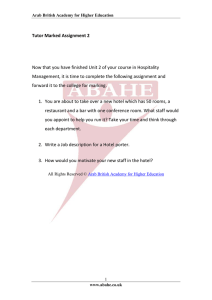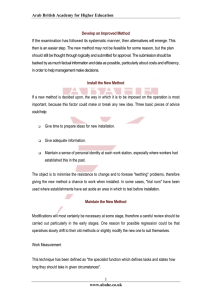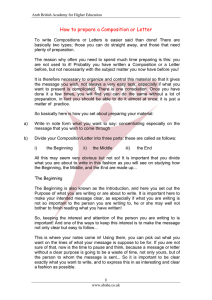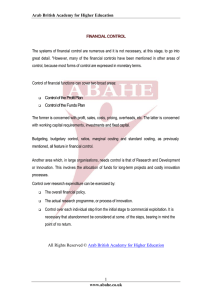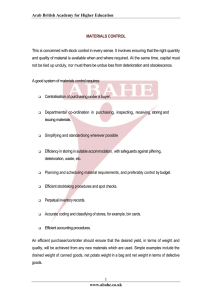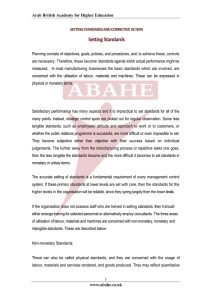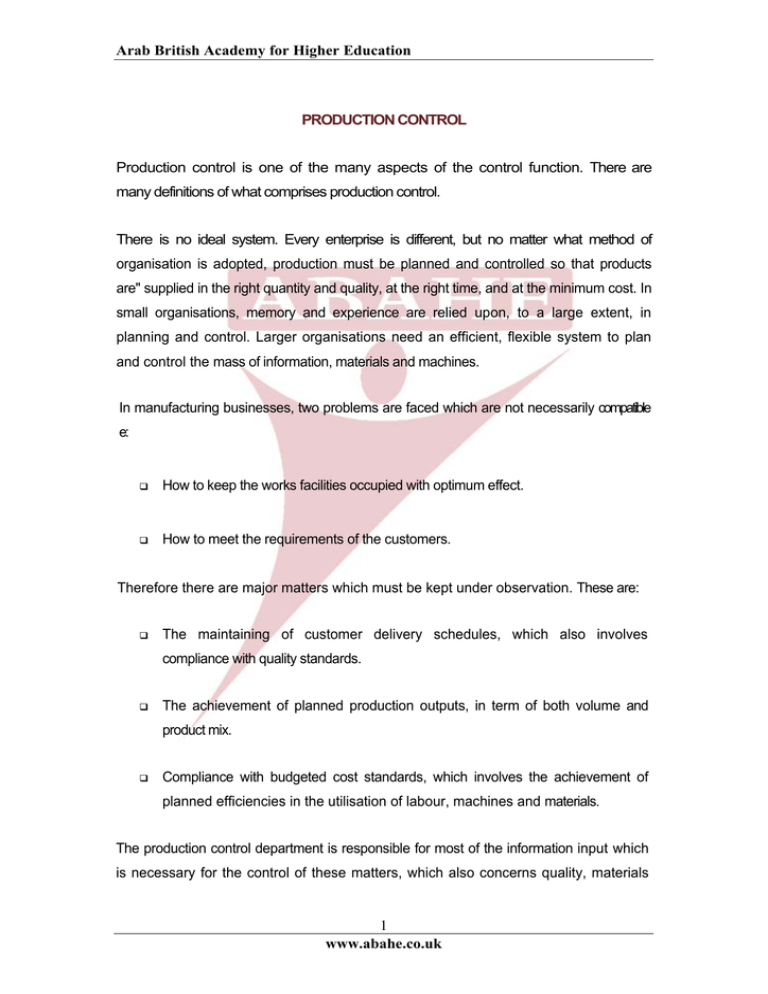
Arab British Academy for Higher Education
PRODUCTION CONTROL
Production control is one of the many aspects of the control function. There are
many definitions of what comprises production control.
There is no ideal system. Every enterprise is different, but no matter what method of
organisation is adopted, production must be planned and controlled so that products
are" supplied in the right quantity and quality, at the right time, and at the minimum cost. In
small organisations, memory and experience are relied upon, to a large extent, in
planning and control. Larger organisations need an efficient, flexible system to plan
and control the mass of information, materials and machines.
In manufacturing businesses, two problems are faced which are not necessarily compatible
e:
How to keep the works facilities occupied with optimum effect.
How to meet the requirements of the customers.
Therefore there are major matters which must be kept under observation. These are:
The maintaining of customer delivery schedules, which also involves
compliance with quality standards.
The achievement of planned production outputs, in term of both volume and
product mix.
Compliance with budgeted cost standards, which involves the achievement of
planned efficiencies in the utilisation of labour, machines and materials.
The production control department is responsible for most of the information input which
is necessary for the control of these matters, which also concerns quality, materials
1
www.abahe.co.uk
Arab British Academy for Higher Education
(stock), machines and labour controls. This, then, can be applied to Food and Beverage
Control, Front of House Control or Housekeeping Control.
Production control is often overlooked or under-utilised by catering management.
Goods should be carefully controlled from entry to bar, restaurant and kitchen. They
should also be controlled during motion from these areas to the customer. Bad control
or lack of control promotes wastage of materials and labour, pilferage, over production, and
poor menu planning. It is in this area that many control systems are used, such as, restaurant
and kitchen checking systems, daily sales analysis, cash handling systems, stores requisitions,
kitchen percentage budgets, etc. Therefore, the following statements are desirable:
Daily control - expressed in readily available physical, units.
Weekly control - summarising the daily controls, but using costs as much as possible.
Weekly control summary - expressing the weekly result from several,
associated departments in a concise form for the higher management.
Control indices provide a rapid indication of the control, situation. These usually express actual,
results as a percentage of budget or the allowed standards. For example, budgeted bed
occupancy for the week may be set at 60%, whereas the actual was 70%, hence 70/60 x 100 =
117% (approximately). Therefore anything over the standard (100) is good, that is, budget or
better. Anything below 100 is bad and requires corrective action.
All Rights Reserved © Arab British Academy for Higher Education
2
www.abahe.co.uk

